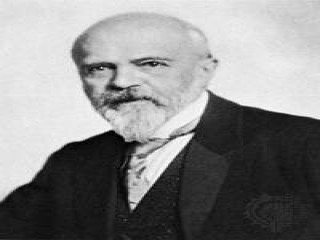
Hans Driesch biography
Date of birth : 1867-10-28
Date of death : 1941-04-17
Birthplace : Bad Kreuznach, Germany
Nationality : German
Category : Science and Technology
Last modified : 2011-05-31
Credited as : Biologist, and philosopher, Great Discoveries in the Life Sciences
The German biologist and philosopher Hans Adolf Eduard Driesch was a leading representative of vitalism in the 20th century.
Hans Driesch was born at Bad Kreuznach on Oct. 28, 1867, into a prosperous middle-class family. After studying zoology at the University of Freiburg, he spent some semesters at Munich and then finished his degree at Jena in 1889 under the direction of Ernst Haeckel. Haeckel had apparently established mechanism as the dominant theory in biology and zoology, and Driesch's early work was a series of experimental efforts to confirm this theory. Contrary to his expectations, the experiments seemed to cast doubt on the hypothesis that living beings can be understood on purely mechanist principles.
From 1891 to 1900 Driesch worked at the Marine Biological Station in Naples, continuing his experiments and groping for a theoretical formulation of his results. At this point in his career, he began to read the classical modern philosophers, looking for an adequate philosophical theory of the organism. At the end of a long series of publications in which he explored tentative hypotheses and halfway theories, he finally presented an account of the life processes in genuinely teleological and dynamic terms in the book The Localization of Morphogenetic Processes (1894).
Thereafter Driesch's interests shifted from experimental work to conceptual analysis. He sought to explain the relationship between the concepts of life and the concepts of matter. In 1908 he published his Gifford Lectures, The Science and Philosophy of the Organism, the first full-length presentation of his ideas. At this point Driesch determined to take up a career in academic philosophy and became a lecturer at Heidelberg. Before a decade had elapsed, he had published a complete system of philosophy in three volumes, of which the most basic is his Theory of Order (1912).
In 1919 Driesch took a chair of systematic philosophy at Cologne and 2 years later accepted a similar post at Leipzig. In later years he was a visiting professor in China, the United States, and South America. After Hitler's assumption of power, Driesch was forced out of his position. He became interested in parapsychology and published on such phenomena as telepathy, clairvoyance, and telekinesis. Driesch was married to Margarete Relfferschneidt, and the couple had two children. He died on April 17, 1941.
In spite of his unusually large output of books and articles, Driesch's work has evoked little response. Ruth Moore, The Coil of Life: The Story of the Great Discoveries in the Life Sciences (1961), includes a biographical chapter on Driesch. His theories are discussed in Joseph Needham, Order and Life (1936); Rainer Schubert-Soldern, Mechanism and Vitalism: Philosophical Aspects of Biology, edited by Philip G. Fothergill (trans. 1962); and Jane M. Oppenheimer, Essays in the History of Embryology and Biology (1967).
















